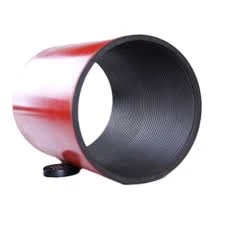- Afrikaans
- Albanian
- Amharic
- Arabic
- Armenian
- Azerbaijani
- Basque
- Belarusian
- Bengali
- Bosnian
- Bulgarian
- Catalan
- Cebuano
- Corsican
- Croatian
- Czech
- Danish
- Dutch
- English
- Esperanto
- Estonian
- Finnish
- French
- Frisian
- Galician
- Georgian
- German
- Greek
- Gujarati
- Haitian Creole
- hausa
- hawaiian
- Hebrew
- Hindi
- Miao
- Hungarian
- Icelandic
- igbo
- Indonesian
- irish
- Italian
- Japanese
- Javanese
- Kannada
- kazakh
- Khmer
- Rwandese
- Korean
- Kurdish
- Kyrgyz
- Lao
- Latin
- Latvian
- Lithuanian
- Luxembourgish
- Macedonian
- Malgashi
- Malay
- Malayalam
- Maltese
- Maori
- Marathi
- Mongolian
- Myanmar
- Nepali
- Norwegian
- Norwegian
- Occitan
- Pashto
- Persian
- Polish
- Portuguese
- Punjabi
- Romanian
- Russian
- Samoan
- Scottish Gaelic
- Serbian
- Sesotho
- Shona
- Sindhi
- Sinhala
- Slovak
- Slovenian
- Somali
- Spanish
- Sundanese
- Swahili
- Swedish
- Tagalog
- Tajik
- Tamil
- Tatar
- Telugu
- Thai
- Turkish
- Turkmen
- Ukrainian
- Urdu
- Uighur
- Uzbek
- Vietnamese
- Welsh
- Bantu
- Yiddish
- Yoruba
- Zulu
Compression Tubing Coupler for Efficient Fluid Transfer and Secure Connections in Various Applications
Understanding Compression Tubing Couplers A Key Component in Fluid Transfer Systems
In various industrial applications, efficient fluid transfer is crucial for maintaining operational effectiveness. One critical component that facilitates this process is the compression tubing coupler. This device plays a vital role in connecting two ends of a tubing system securely and efficiently, ensuring that fluids can flow without leakage and with optimal pressure retention.
A compression tubing coupler is typically designed to connect two sections of tubing when using rigid or flexible tubing. It functions by compressing a ring over the tubing ends, creating a tight seal that prevents any fluid from escaping. This is particularly important in industries where precision and reliability are paramount, such as in chemical processing, pharmaceuticals, and food and beverage production.
The design of a compression tubing coupler is relatively straightforward but relies on several engineering principles to ensure effectiveness. The coupler usually consists of a body, nut, and a compression ring, also known as a ferrule. The tubing is inserted into the coupler, and as the nut is tightened, the ferrule compresses around the tube, forming a seal that can withstand high pressures. The material used for these components is critical; many couplers are made from brass, stainless steel, or plastic, each of which has unique advantages depending on the application and the type of fluid being transported.
compression tubing coupler

One of the significant advantages of compression tubing couplers is their ease of installation and maintenance. Unlike welded or soldered connections, which require specialized equipment and skills, compression couplers can be assembled quickly with basic tools, making them an attractive option for many industrial settings. Additionally, if a tube needs to be replaced or removed, it can be done so without damaging the coupler, providing a distinct advantage in terms of maintenance and operational flexibility.
In terms of application, compression tubing couplers are used across a broad range of industries. In the oil and gas sector, they connect tubing that transports crude oil or gas. In the water treatment industry, they can be found in systems that transport treated water or chemicals. Moreover, they are essential in HVAC systems, where they connect pipes carrying refrigerants or other fluids.
However, it’s crucial to select the correct type of compression coupler for the specific application. Factors such as the type of fluid, temperature, pressure ratings, and compatibility with other materials must be considered to ensure a reliable and leak-free connection.
In conclusion, compression tubing couplers are indispensable components in fluid transfer systems across various industries. Their robust design, ease of use, and versatility make them a preferred choice for engineers and technicians alike. As industries continue to require precise and efficient solutions for fluid management, the significance of compression tubing couplers will only intensify, making it essential to understand their functionality and application. With the right knowledge and considerations, companies can ensure they select the best couplers for their needs, leading to enhanced operational performance and safety.
-
Tubing Pup Joints: Essential Components for Oil and Gas OperationsNewsJul.10,2025
-
Pup Joints: Essential Components for Reliable Drilling OperationsNewsJul.10,2025
-
Pipe Couplings: Connecting Your World EfficientlyNewsJul.10,2025
-
Mastering Oilfield Operations with Quality Tubing and CasingNewsJul.10,2025
-
High-Quality Casing Couplings for Every NeedNewsJul.10,2025
-
Boost Your Drilling Efficiency with Premium Crossover Tools & Seating NipplesNewsJul.10,2025







